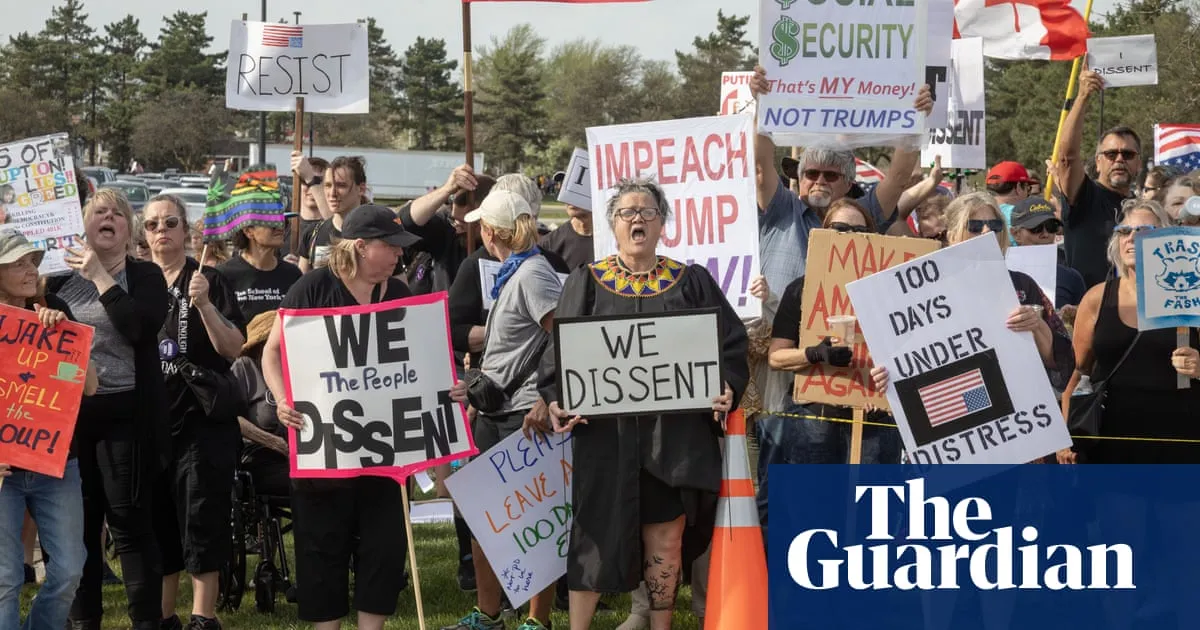
On May 1, protesters are set to rally across the nation, spotlighting the critical issues of workers’ rights and immigrants’ rights in an ongoing demonstration against former President Donald Trump and his administration. This year’s May Day, recognized globally as International Workers’ Day, follows two significant protest events in April: the “Hands Off” rallies on April 5 and the Day of Action on April 19, which collectively attracted millions of demonstrators nationwide.
Organizers anticipate that the May 1 protests will involve hundreds of organizations and take place in nearly 1,000 cities. Although turnout may be lower than the previous April demonstrations due to the weekday scheduling of May Day, tens of thousands of participants are still expected to join in the fight. A statement on the national day of action website emphasizes the urgency of the movement: “This is a war on working people – and we will not stand down.”
The website also highlights the ongoing issues faced by workers, stating, “They’re defunding our schools, privatizing public services, attacking unions, and targeting immigrant families with fear and violence. Working people built this nation, and we know how to take care of each other. We won’t back down – we will never stop fighting for our families and the rights and freedoms that propel opportunity and a better life for all Americans. Their time is up.”
A detailed map of the May Day protests indicates that several major metropolitan areas will host multiple rallies. In Los Angeles, a coalition of groups plans to kick off the day with an early morning rally, followed by a program and a march to express solidarity with the city’s workers and immigrants. Meanwhile, in New York, protests are scheduled for the early evening, highlighting the city’s vibrant activist community.
As Trump surpasses 100 days in office, a period marked by significant cuts to federal programs and erosion of democratic norms, a strong resistance movement has emerged. This movement has gained traction since February, leading individuals to organize in larger groups to encourage Democrats to adopt a more assertive stance against the administration. Notably, Trump’s approval ratings have plummeted, with a growing number of individuals expressing disapproval of his presidency.
The emphasis on workers and immigrants comes at a crucial time, as the Trump administration has dismissed numerous federal employees and intensified deportations, including targeting individuals previously protected by court rulings. The May Day protest website articulates a powerful message: “Everyone deserves respect and dignity, no matter who they are, where they were born, or what language they speak. Immigrants are workers, and workers are immigrants. Our fight for fair wages, safe workplaces, and dignity on the job is the same fight for immigrant justice.”
Jorge Mújica, the strategic organizer for Arise Chicago and a key figure behind the city’s May Day protest, expressed his views on Democracy Now, stating, “The Trump administration miscalculated completely” by antagonizing so many diverse groups within its first 100 days. He added, “They are attacking everybody at the same time, and that has enabled us to gather a really broad coalition with labor unions, federal workers, students, university teachers, and every other community to put together this event on May Day.”
As May Day approaches, the nationwide protests serve as a powerful reminder of the ongoing struggles for workers’ rights and immigrant justice, galvanizing communities to take a stand against policies that threaten their livelihoods and dignity.